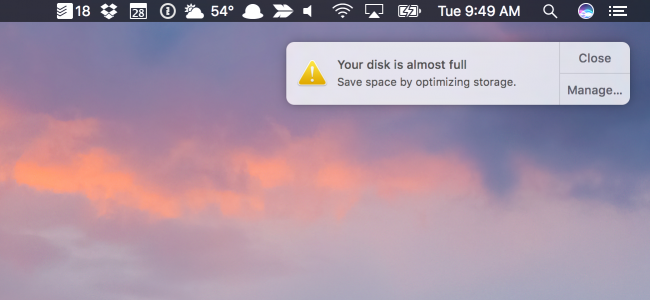

- #HOW TO FREE UP SPACE ON MAC HARDDRIVE FOR MAC#
- #HOW TO FREE UP SPACE ON MAC HARDDRIVE MAC OS X#
- #HOW TO FREE UP SPACE ON MAC HARDDRIVE DOWNLOAD#
Sort out big and old files by size, date at once, making it easier for you the identify useless files Scan out junk files and delete the useless data Identify system files that can be safely removed from hard drive It allows users to free clean up your Mac for 500 GB space, so that you can try to optimize Mac before the purchasing.
#HOW TO FREE UP SPACE ON MAC HARDDRIVE DOWNLOAD#
Macube Cleaner (opens new window) is the best Mac cleaner that you can download from the following button. Use Practical Tool to Clean Your Mac Hard Drive Effectively Macube Cleaner (opens new window), the program that will be introduced below, is top-ranked among its kind.
#HOW TO FREE UP SPACE ON MAC HARDDRIVE FOR MAC#
That's why developers create different Mac cleaners to make cleaning easier and more effective for Mac users. Moreover, for system/application/users files in Other category, we don't even know the exact locations of these files. It means that we have to go through folder by folder to find the unwanted files. However, this is much more troublesome than it sounds. Now that we know what's taking up the space of the Mac hard drive, we can search for the unwanted files and delete them to clean up space. System and applications files, such as user library items, user caches and system caches įonts, app accessories, application plugins, and app extensions. They could be:Īrchives and disk images, including zips, dmg, iso, etc

In fact, this mysterious Other category includes all data that can't be identified as photos, movies, apps, audios, backups. And sometimes it is the "Other" data that takes up most of the space on your hard drive. You probably have no doubt about the first five kinds of data but get confused about what this "Other" storage category is. You'll see that there are six kinds of data that are eating up your storage: photos, movies, apps, audios, backups and other. Click the Apple icon at the top-left corner of your screen. Here is how you can check your hard drive storage on Mac: Use Practical Tool to Clean Your Mac Hard Drive Effectivelyīefore the clean-up, let's see what's taking up space of your Mac's hard drive so that you will know what to clean to get a faster Mac.What is Taking Up Space on Mac Hard Drive.Keep in mind that the latter two options take longer to complete, because they are performing the same overwrite task either 3 times or 7 times. Most Secure – The most secure option that also takes the longest, this writes data over the free space a total of 7 times.Ĭhoose whichever option is most appropriate for your needs, but it's generally recommended to use the "secure" or "most secure" option if you intend on transferring ownership of a hard drive, or if you suspect a hard drive that once contained important data has the chance of being stolen or misused.Secure (middle option) – A triple pass erasure, this writes zeros over the unused space three times.Fastest – The quickest option, this does a single pass write of a bunch of zeros over the unused portion of the hard drive.The three Erase Free Space options are as follows:.Select the desired level of erasure and choose "Erase Free Space" to begin the process of overwriting the free space on the hard drive.Choose the "Erase" tab, then choose the "Erase Free Space" option.Connect the hard drive if it's an external disk, and then select the hard drive from the left side menu.Launch Disk Utility, found within /Applications/Utilities/ or through Launchpad.
#HOW TO FREE UP SPACE ON MAC HARDDRIVE MAC OS X#
Erasing Free Space on Hard Drives in Mac OS X This option is not available for flash-memory based SSD models (like those bundled within the MacBook Air, Retina MacBook Pro) because those drives use the TRIM function to quickly remove and recover blocks instead, which has the side effect of automatically preventing file recovery fairly quickly – often within 10 minutes of emptying the Trash. This only works on traditional hard drives of the spinning platter variety, which is typical for MacBook Pro, Mac Mini, and iMac models, and is the case with most external hard drives used for backups. The Mac OS X Disk Utility app provides an ability to erase free space on traditional hard drives, which overwrites vacant disk space on the drive to prevent any potential recovery of deleted files (that is, files that have been removed traditionally, rather than through secure methods).


 0 kommentar(er)
0 kommentar(er)
